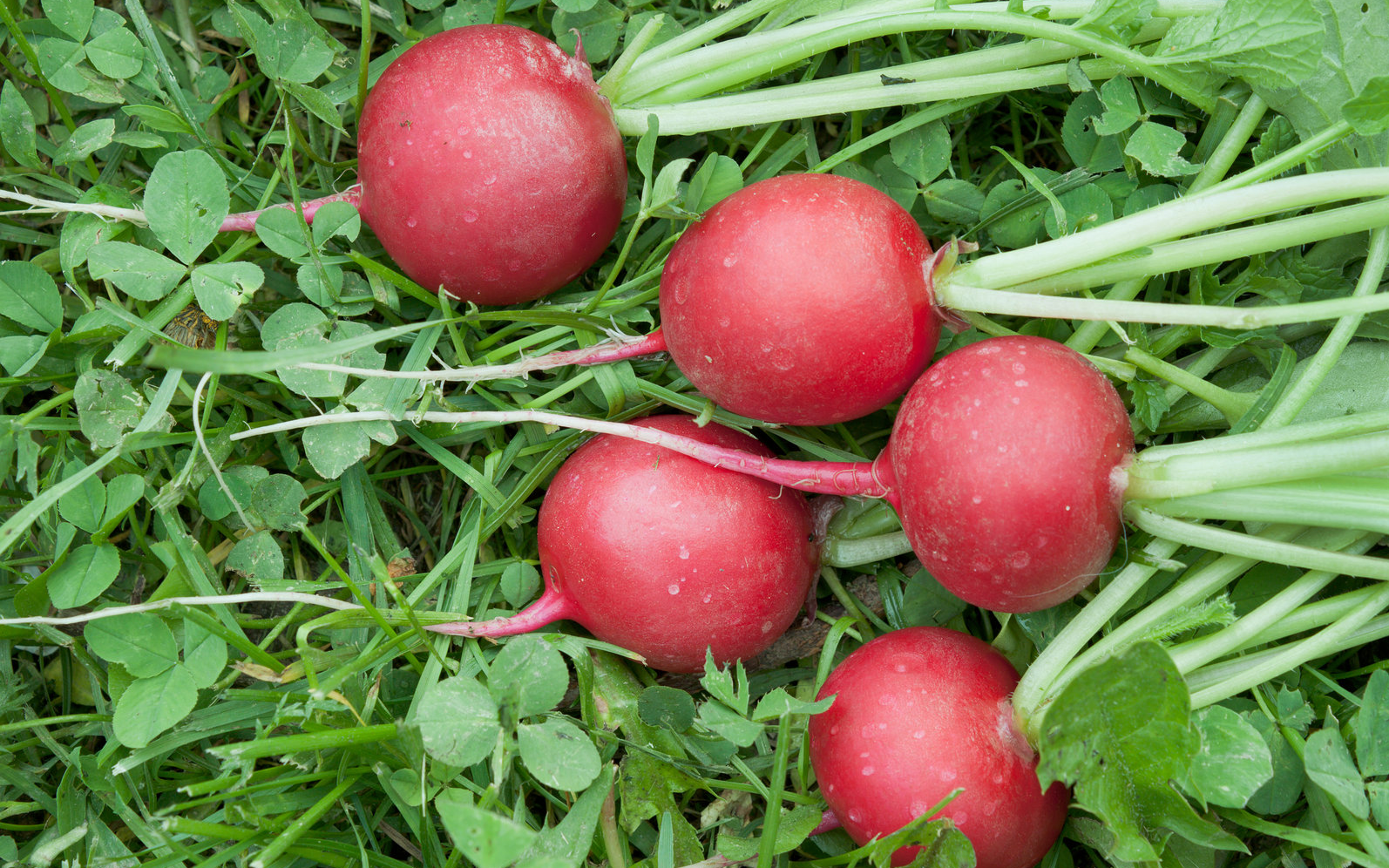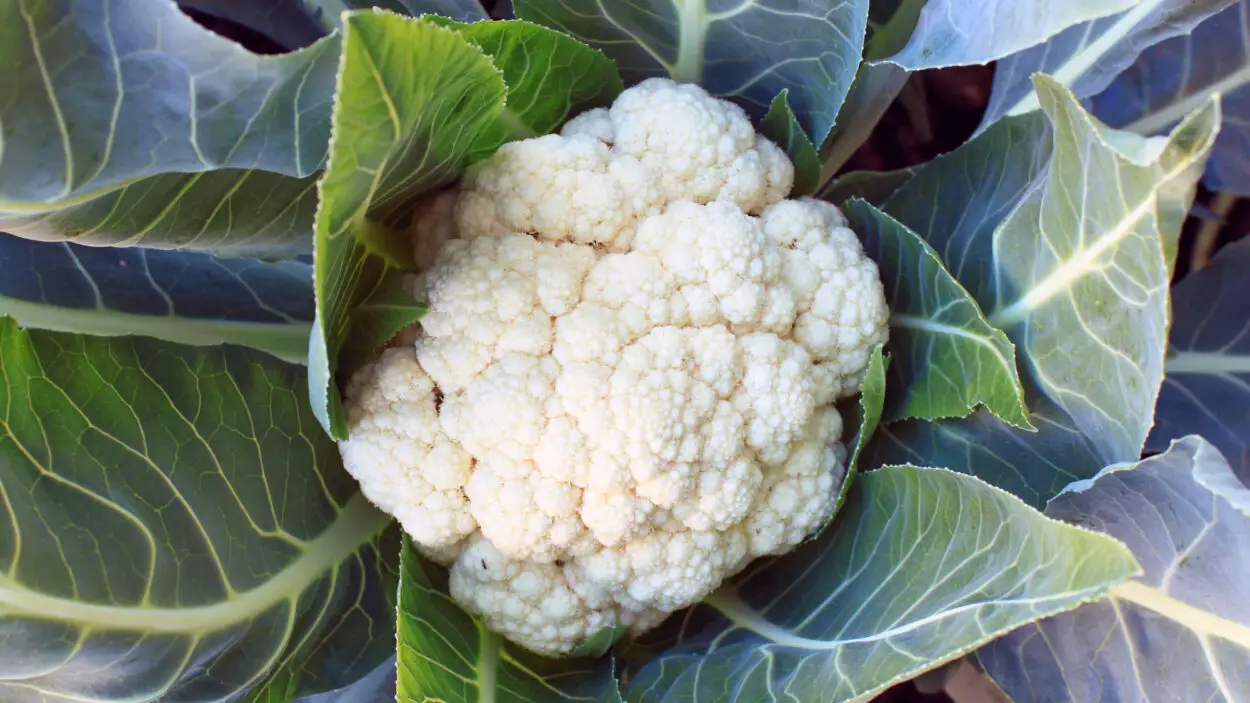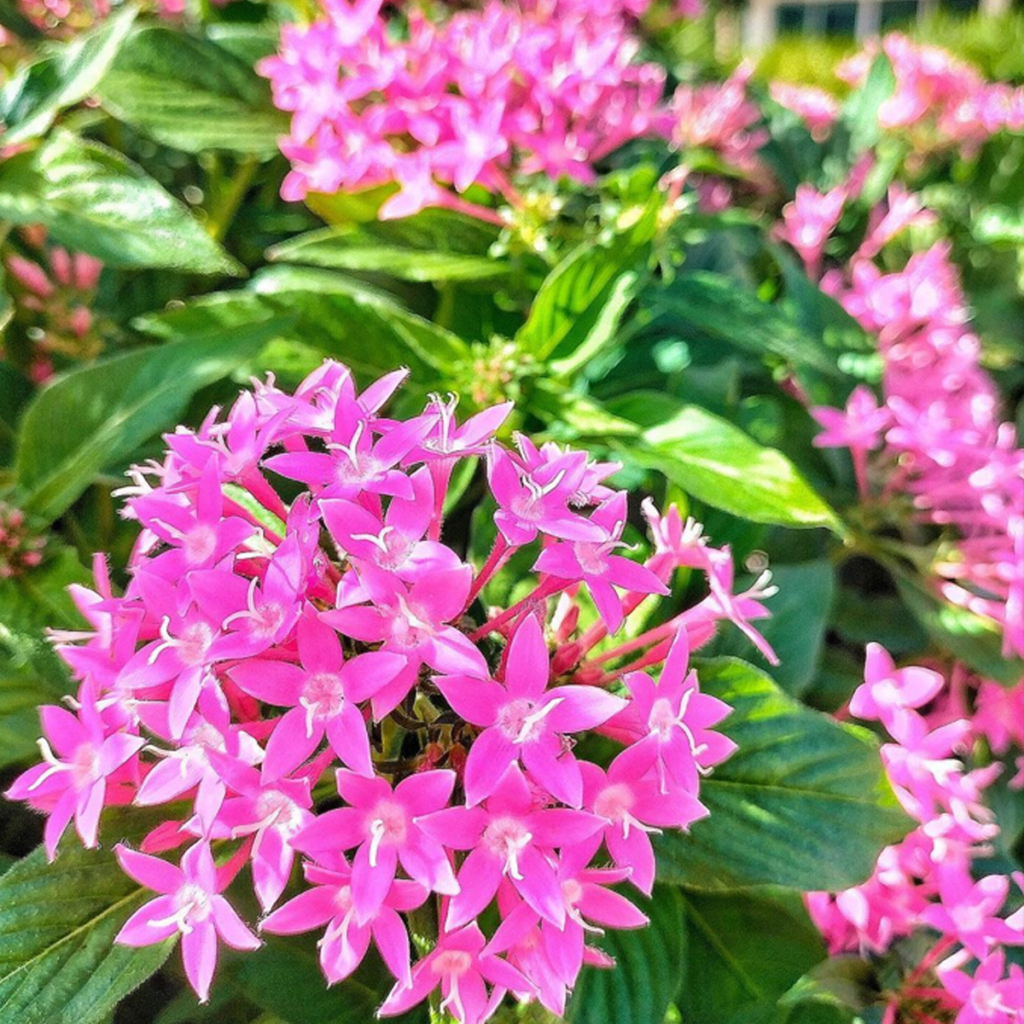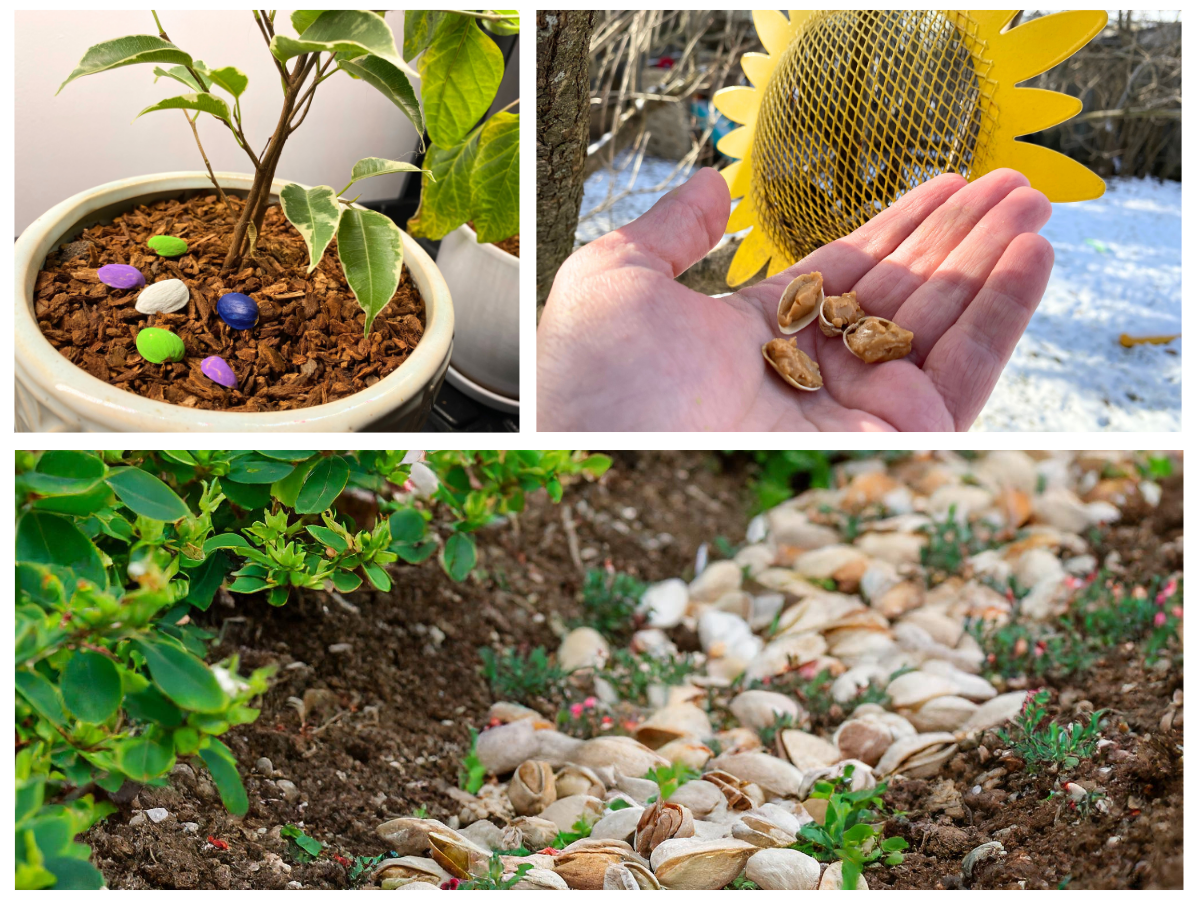12 Pink Flowering Trees to Brighten Up Your Garden + Pics

Spring is just around the corner, and what better way to welcome the new season than by planting beautiful flowering trees in your garden? They can add a touch of color and elegance to your outdoor space.

Whether looking for a garden centerpiece or a small tree for your patio, you don’t lack options. I’ve compiled a list of 12 stunning pink flowering trees to make your springtime garden a paradise, so take a look. If you love the thought of adding a pop of color in your garden with trees check out my list of the best purple flowering trees.
1. Pink Tabebuia (Tabebuia rosea)

The Pink Tabebuia, with its strikingly beautiful pink trumpet-shaped flowers, is a tropical beauty that will surely add a touch of exotic flair to any garden or landscape.
A moderate grower, it thrives in warm climates and loves full sun exposure.
It’s also incredibly drought-tolerant, making it a great option for water-wise gardens. The Pink Tabebuia is truly a sight to behold when in full bloom, with its dazzling pink flowers contrasting against its lush green foliage.
| Botanical Name: | Tabebuia rosea |
| Growth Rate: | Moderate |
| Native Range: | Tropical America |
| Hardiness Zones | 10-11 |
| Exposure: | Full sun |
| Soil Needs: | Well-drained, acidic soil |
| Tolerate: | Drought, heat, and wind |
| Fertilizing Needs: | Balanced, slow-release fertilizer once a year |
| Pruning Needs: | Minimal pruning needed |
| Water Needs: | Moderate |
2. Crape Myrtle (Lagerstroemia indica.)

The Crape Myrtle is a quintessential Southern beauty loved for its stunning, crepe-like flowers in shades ranging from white to pink to purple.
With a moderate growth rate and a hardiness zone of 7-9, this tree loves full sun exposure and well-drained, fertile soil.
The Crape Myrtle is a fantastic choice for gardeners who want to add a pop of color to their landscape, and with its attractive bark and stunning fall foliage, it will be a showstopper in any season.
| Botanical Name: | Lagerstroemia indica. |
| Growth Rate: | Moderate |
| Native Range: | Southeast Asia |
| Hardiness Zones | 7-9 |
| Exposure: | Full sun |
| Soil Needs: | Well-drained, fertile soil |
| Tolerate: | Drought, heat, and some cold |
| Fertilizing Needs: | Fertilize in early spring and mid-summer |
| Pruning Needs: | Annual pruning to shape and remove dead wood |
| Water Needs: | Moderate to high |
3. Eastern Redbud – (Cercis canadensis)
The Eastern Redbud or Judas Tree is a native North American tree that boasts beautiful magenta flowers long before its leaves emerge in early spring.
With its moderate growth rate and hardiness zone of 4-9, this tree prefers full sun to partial shade exposure and well-drained, moist soil.
The Eastern Redbud is a fantastic choice for gardeners who want to attract pollinators to their gardens, and with its heart-shaped leaves and unique bark, it is a tree that will catch the eye all year round.
| Botanical Name: | Cercis canadensis |
| Growth Rate: | Moderate |
| Native Range: | Eastern United States |
| Hardiness Zones | 4-9 |
| Exposure: | Full sun to partial shade |
| Soil Needs: | Well-drained, moist soil |
| Tolerate: | Drought and some heat |
| Fertilizing Needs: | Fertilize in early spring and mid-summer |
| Pruning Needs: | Prune in late winter or early spring |
| Water Needs: | Moderate |
4. Jane Magnolia (Magnolia ‘Jane’)

Jane Magnolia: The Jane Magnolia, a hybrid of Asian species, is a slow-growing tree worth waiting for. With its stunning, fragrant pink-purple flowers blooming in early spring, it is a tree that will turn heads.
The Jane Magnolia prefers full sun to partial shade exposure and well-drained, acidic soil. It is also drought and heat-tolerant, making it a great option for gardeners in warmer climates.
The Jane Magnolia is a true standout in any landscape, with its stunning flowers and attractive foliage that turns bronze in the fall.
| Botanical Name: | Magnolia ‘Jane’ |
| Growth Rate: | Slow |
| Native Range: | A hybrid of Asian species |
| Hardiness Zones | 4-8 |
| Exposure: | Full sun to partial shade |
| Soil Needs: | Well-drained, acidic soil |
| Tolerate: | Drought, heat, and some cold |
| Fertilizing Needs: | Fertilize in early spring and mid-summer |
| Pruning Needs: | Prune after flowering to shape |
| Water Needs: | Moderate to high |
5. Flowering Almond Tree (Prunus triloba’ Multiplex’)

The Flowering Almond Tree, with its delicate, pink double-blossom flowers, is a tree that is sure to add a touch of romance to any garden or landscape.
With a moderate growth rate and a hardiness zone of 4-8, this tree loves full sun to partial shade exposure and well-drained, fertile soil.
The Flowering Almond Tree is a fantastic choice for gardeners who want to add early spring color to their landscape. With its attractive foliage and unique bark, it is a tree that will be appreciated year-round.
| Botanical Name: | Prunus triloba’ Multiplex’ |
| Growth Rate: | Moderate |
| Native Range: | Central and Western China |
| Hardiness Zones | 4-8 |
| Exposure: | Full sun to partial shade |
| Soil Needs: | Well-drained, fertile soil |
| Tolerate: | Drought, heat, and some cold |
| Fertilizing Needs: | Fertilize in early spring and mid-summer |
| Pruning Needs: | Prune in late winter or early spring |
| Water Needs: | Moderate to high |
6. Pink Flowering Dogwood Trees (Cornus florida f. rubra)

The Pink Flowering Dogwood is a beloved native of the Eastern United States highly valued for its gorgeous spring blossoms.
The tree’s pink flowers stand out against its smooth, gray bark and bright green leaves. While it may take some patience for the tree to reach its full potential, it’s well worth the wait to see this beauty in full bloom.
| Botanical Name: | Cornus florida f. rubra |
| Growth Rate: | Slow to moderate |
| Native Range: | Eastern United States |
| Hardiness Zones | 5-9 |
| Exposure: | Partial shade to full sun |
| Soil Needs: | Well-draining, moist, acidic soil |
| Tolerate: | Some drought tolerance, once established |
| Fertilizing Needs: | Benefit from occasional fertilization |
| Pruning Needs: | Minimal |
| Water Needs: | Regular watering, especially in dry periods |
7. Pink Trumpet Tree (Tabebuia rosea)

The Pink Trumpet Tree is a stunning tropical tree with large, showy pink flowers that bloom in early spring before its leaves appear.
Native to Central and South America, it’s commonly planted in warmer regions of the world for its striking beauty.
Its trumpet-shaped flowers attract a wide variety of pollinators, making it a popular choice for gardeners who want to encourage biodiversity.
| Botanical Name: | Tabebuia rosea |
| Growth Rate: | Moderate |
| Native Range: | Central and South America |
| Hardiness Zones | 9-11 |
| Exposure: | Full sun |
| Soil Needs: | Well-draining soil |
| Tolerate: | Drought tolerant |
| Fertilizing Needs: | Benefit from occasional fertilization |
| Pruning Needs: | Minimal |
| Water Needs: | Moderate watering; can handle some drought once established |
8. Judas Tree (Cercis siliquastrum)

The Judas Tree is a small, ornamental tree native to the Mediterranean region. Its clusters of bright pink flowers emerge in early spring before its heart-shaped leaves appear.
Legend has it that Judas Iscariot hanged himself from a tree of this species, hence the tree’s name. Despite its ominous name, the Judas Tree symbolizes love and renewal, making it a wonderful addition to any garden.
| Botanical Name: | Cercis siliquastrum |
| Growth Rate: | Slow to moderate |
| Native Range: | Mediterranean region |
| Hardiness Zones | 7-9 |
| Exposure: | Full sun to partial shade |
| Soil Needs: | Well-draining soil |
| Tolerate: | Drought tolerant once established |
| Fertilizing Needs: | Benefit from occasional fertilization |
| Pruning Needs: | Minimal |
| Water Needs: | Moderate watering; can handle some drought once established |
9. Pink Silk Tree (Albizia julibrissin)

The Pink Silk Tree, also known as the Mimosa Tree, is a fast-growing, deciduous tree that produces striking pink flowers in late spring/early summer.
Native to Asia, it’s often planted in warmer regions for its tropical appeal.
Its feathery leaves and showy flowers give the tree a delicate, elegant appearance, making it a favorite among gardeners who want to add a touch of sophistication to their landscape.
| Botanical Name: | Albizia Julibrissin |
| Growth Rate: | Fast |
| Native Range: | Iran to Japan |
| Hardiness Zones | 6-9 |
| Exposure: | Full sun |
| Soil Needs: | Well-draining soil |
| Tolerate: | Drought tolerant once established |
| Fertilizing Needs: | Benefit from occasional fertilization |
| Pruning Needs: | Can be pruned to shape when young |
| Water Needs: | Moderate to low watering; can handle some drought once established |
10. Harvester Peach Tree (Prunus persica ‘Harvester’)

The Harvester Peach Tree is a moderate-sized deciduous tree prized for its juicy, sweet peaches that ripen mid-summer. Its pink flowers bloom in early spring, and its leaves turn a vibrant yellow-orange in the fall.
Native to Asia, the tree requires reasonable care, including annual pruning to maintain its shape and fruit production. With a little TLC, the Harvester Peach Tree will reward you with bountiful harvests of delicious fruit year after year.
| Botanical Name: | Prunus persica ‘Harvester’ |
| Growth Rate: | Moderate |
| Native Range: | Asia |
| Hardiness Zones | 5-8 |
| Exposure: | Full sun |
| Soil Needs: | Well-draining, fertile soil |
| Tolerate: | Some drought tolerance, once established |
| Fertilizing Needs: | Benefit from regular fertilization |
| Pruning Needs: | Requires annual pruning to maintain shape and fruit production |
| Water Needs: | Regular watering, especially during fruit production |
11. Oleander (Nerium oleander)

The Oleander is a stunning, fast-growing evergreen shrub or small tree prized for its abundant, showy blooms and glossy, leathery foliage.
Native to the Mediterranean and Asia, it’s often planted in warm climates worldwide for its drought, heat, and salt tolerance.
Its pink, red, or white flowers appear in clusters throughout the summer and fall, attracting butterflies and hummingbirds to the garden.
However, it’s important to note that all parts of the Oleander plant are toxic if ingested, so care should be taken when planting it around children and pets.
| Botanical Name: | Nerium oleander |
| Growth Rate: | Fast |
| Native Range: | Mediterranean, Asia |
| Hardiness Zones | 8-10 |
| Exposure: | Full sun to partial shade |
| Soil Needs: | Well-draining, slightly acidic soil |
| Tolerate: | Drought, heat, salt, pollution |
| Fertilizing Needs: | Low |
| Pruning Needs: | Regular pruning for shape and size; can be toxic if ingested |
| Water Needs: | Moderate, drought-tolerant once established |
12. Bauhinia Tree (Bauhinia blakeana)
The Bauhinia Tree, also known as the Hong Kong Orchid Tree, is a stunning, moderate-sized deciduous tree native to Southeast Asia and China.
Its unique, butterfly-shaped leaves and vibrant pink or purple flowers make it a show-stopping addition to any landscape.
The flowers, which appear in late winter and early spring, symbolize Hong Kong and are often used in cultural celebrations.
The tree is adaptable to various soil types and tolerates heat and humidity well, making it a great choice for warm climates.
| Botanical Name: | Bauhinia blakeana |
| Growth Rate: | Moderate |
| Native Range: | Southeast Asia, China |
| Hardiness Zones | 9-11 |
| Exposure: | Full sun to partial shade |
| Soil Needs: | Well-draining soil; can tolerate some alkalinity |
| Tolerate: | Heat, humidity, some drought |
| Fertilizing Needs: | Low to moderate |
| Pruning Needs: | Regular pruning for shape and size |
| Water Needs: | Moderate; can tolerate some drought once established |
Final Thoughts
As you can see, pink flowering trees are a fantastic addition to any garden.
With the right care and attention, these trees will continue to grow and flourish year after year, adding color and life to your garden for decades. So, what are you waiting for?
Plant one (or all!) of these pink flowering trees this spring and watch your garden come to life with vibrant color and beauty.




